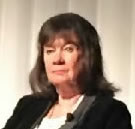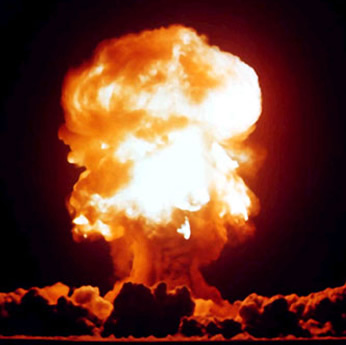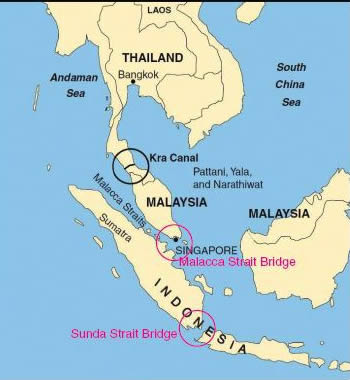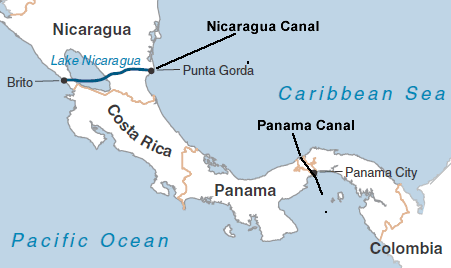It is Time to End War and the Tyranny of Geopolitics:
"The Need for Global Public Works:
The New Silk Road becomes the World Land-Bridge"
By Helga Zepp-LaRouche
December 2015
Schiller Institute founder Helga Zepp-LaRouche addressed business leaders and policy makers in Tokyo, Japan, presenting the World Land-Bridge as the pathway to end the tyranny of war and geopolitics, and solve the ongoing Middle East crisis, at two Conferences on December 2, 2015. We present the text of her presentation to the Seventh Annual Asia Innovation Forum here. She was also a speaker at the Canon Institute Forum, along with her colleague Jeffrey Steinberg, Senior Editor of EIR (Executive Intelligence Review).
Watch the video

Helga Zepp-LaRouche. |
Dear Ladies and Gentlemen,
The sheer number of explosive crises around the globe make previous pre-world war situations look calm by comparison. The recent downing of the Russian fighter jet by Turkey, which qualified American sources say Turkey would never have done without tacit support from the White House, and the subsequent support given by both President Obama and NATO to the Turkish action demonstrate—given the launch-on-warning-readiness of the nuclear arsenals of the United States and Russia, with a decision time of mere minutes—how close we are to the present, new Cold War becoming a hot war.
The fact that Russia and China correctly regard the U.S. Ballistic Missile System in Eastern Europe, and the Prompt Global Strike and Air Sea Battle doctrines, as First Strike doctrines directed against their nations, has already led to a new arms race. Trans-Atlantic military experts warn that the situation now is more dangerous than during the height of the Cold War, due to the lack of any codes of procedure or reliable emergency “red telephone” communication mechanism between the United States and Russia.
Theromonuclear explosion
 |
Aggravating this unthinkable danger is the overriding dynamic which arises from the United States’ insistence that a uni-polar world must be maintained, while, in fact, rising Asia, by its sheer weight, has already created a multi-polar world. The warnings of experts such as former U.S. Joint Chiefs of Staff Chairman Gen. Martin Dempsey, that the West should not fall into the Thucydides Trap, seem to go unheard.
In addition, the crisis situation in Ukraine, the tensions in the South China Sea, and the Satanic degree of barbarism demonstrated by ISIS and Boko Haram underline the mortal danger humanity is facing.
Equally threatening is the prospect of a new crash of the trans-Atlantic financial system which would be more dramatic than the 2008 Lehman Brothers collapse, a craash which the central banks no longer have any viable instruments to cope with.
Do we have to be condemned to continue down this road, when all signs speak to the likelihood that these conflicts will escalate either to global chaos, or to a global thermonuclear war and the likely annihilation of the human species? Is the human species too stupid, indifferent, or degenerate to abandon these policies, even when their failure is already overwhelmingly clear?
‘Coincidentia Oppositorum’
Nikolaus von Kues (Nicholas of Cusa)
 View larger size |
Already in the Fifteenth Century, the famous German philosopher Nikolaus von Kues (Nicholas of Cusa) stated that solutions for complex problems cannot be solved with a heterogeneous assortment of partial solutions; rather, one must find a solution on a higher level, where the contradictions of the lower level are resolved. He called that method of thinking the “coincidentia oppositorum,” the thinking of the coincidence of opposites. This is the idea that the One is of a higher order than the Many.
It is that method which must be used to define a new paradigm in the evolution of the human species today. And it is eminently possible to define a new paradigm which represents the true interest of all nations and all groupings.
Generally, people only become willing to even think about such new ideas when they realize that their underlying assumptions, which they have taken for granted for a long time, have been exposed as completely inadequate. And that is precisely the situation in which we find ourselves now around the globe.
This is most acutely true for Germany, where a qualitatively new debate is taking place in many circles abaout the need to reassess the strategic situation,—a debate guided by a growing perception that if the present policies are continued, the ultimate effect will be like a full-speed crash against a brick wall.
In particular, the refugee crisis has shattered the illusion that any one country can be an island of stability, and that ongoing wars are far away. All of a sudden, there is a public discussion about the root causes of the refugee crisis, which is blowing apart the unity of the European Union (EU): causes such as the Anglo-American wars based on lies, the Saudi financing of terrorism, Turkey buying oil from ISIS, etc.
All of this is creating an openness in people’s thinking to seeing the necessity for a dramatic change in policy! If terrorism is to be permanently eradicated and the refugee crisis overcome, operations against ISIS must take into account its decentralized structures in many countries. But military means are not sufficient: What is needed is real development!!!
It is urgent that a comprehensive reconstruction program for all of Southwest Asia and Africa be put on the top of the agenda. Only if young people, and especially the young men, have the perspective of a future,—including the possibility of raising a family, of becoming scientists, doctors, or architects,—can the environment for the recruitment of the jihadists be dried out.
World Land-Bridge map
 View larger size EIR |
Iron Silk Road map
 View larger size td-architects.eu |
All Will Benefit
Presently, the only realistic perspective for accomplishing such a goal is the extension of the policy of the New Silk Road into both the Near and Middle East, as well as into Africa. The outline for this approach is presented in the study “The New Silk Road becomes the World Land-Bridge,” worldlandbridge.com which defines basic preconditions for a global reconstruction program.
Much of Southwest Asia has been “bombed back into the stone age,” or was already a desert. A comprehensive infrastructure program for the entire region from Afghanistan to the Mediterranean, from the Caucasus to the Persian Gulf, must be put on the agenda. War must be declared against the deserts, by creating large amounts of new fresh water through the desalination of ocean water by means of nuclear energy, or ionization of moisture in the atmosphere. The latter would result in the creation of new rain patterns through the development of agriculture and reforestation.
It is necessary to build infrastructure corridors, with integrated high-speed train systems, highways, and waterways, in order to provide conditions for the location of industries and new cities.
All major neighboring countries of Southwest Asia have a fundamental security interest in participating in such an approach, and therefore must join forces in this project. This includes Russia, because of the close connection between ISIS and the Chechen terrorist networks, as well as the influx of heroin from Afghanistan into Russia; China, because of the connection of ISIS to the Uighurs; and India, since they have a Muslim population of 120 million people and already had Wahhabi-Salafist-sponsored terror attacks in Mumbai and other places. Iran and Egypt, as well as Germany, France, Italy, and, clearly, in real terms, also the United States, have a fundamental interest in solving this problem.
Ōkubo Toshimichi and Ōkuma Shigenobu
 View larger size |
Every nation and every region would benefit from the World Land-Bridge:
1. Japan: For Japan, participation in great projects of the World Land-Bridge would re-establish the tradition of the Meiji Restoration of Okubo Toshimichi and Okuma Shigenobu, whose policies were inspired by Alexander Hamilton and Friedrich List. These policies stem from the understanding that it is the development of the creativity of human labor, and the government’s development of science and technology, which are the sources of wealth in society. This tradition was continued by the Japanese ministry of Internatinal Trade and Industry (MITI) after the Second World War and by the Mitsubishi Global Infrastructure Fund, which worked on many of the projects which are part of the World Land-Bridge Program.
One of those projects, the Kra Canal, which will enable the increased flow of goods in the Pacific region, is again on the table. A second Panama canal is being built in Nicaragua by Chinese companies; the Mekong Delta complex is still urgent; the Transaqua-Lake Chad project has been reactivated by several African countries and a feasibility study is in progress.
Kra Canal Map

Fusion Energy Foundation
View larger size |
Nicaragua and Panama Canals Map
 EIRNS |
Bering Strait tunnel
 View larger size |
The plan for building the Bering Strait tunnel has recently become more timely, given the Russian-Chinese collaboration on the “One Belt, One Road” policy and the Eurasian Economic Union, especially for Siberia and the Far East of Russia.
2. United States: Not only would the United States benefit from joining in the development of Africa and Southwest Asia, but it is itself in urgent need of a reconstruction program.
The New Silk Road approach for the United States would mean the construction of a continental fast train system of 50,000 kilometers, new science cities in the South and West of the Rocky Mountains, and various programs for the creation of new weather patterns.
US proposed rail map
 View larger size Alan Yue/EIRNS 2005 |
US drought map
 View larger size |
Iron Silk Road map
 View larger size |
3. Ukraine: Collaboration between Europe, the Eurasian Economic Union, and the “One Belt, One Road” policy for the construction of infrastructure corridors could reunite Ukraine through creating an economic miracle instead of the present economic collapse.
Europe infrastructure map
 View larger size EIR |
4. Europe: All of Europe has an overwhelming backlog of infrastructure projects which have not been carried out because of a lack of investment. In Germany alone, this shortfall is an estimated two trillion euros. Already in 2012, the Schiller Institute had presented a plan for a new economic miracle in Southern Europe, the Mediterranean, and Africa, as an alternative to the devastating austerity policy of the Troika.
In light of the escalation of the refugee crisis, this development program as an extension of the New Silk Road would be a complete strategic game changer.
5. Africa: Because of the combination of wars and the denial of economic development by application of ecologist and monetarist ideologies, much of the continent, as in Southwest Asia, resembles Hell on Earth, rather than being countries its occupants enjoy living in. The announcement and beginnings of international cooperation to realize a comprehensive development plan for the African continent, would send a powerful message of hope to millions of people now on the run from war, terrorism, hunger, and epidemics.
Map of proposed development projects in Africa
 View larger size EIR |
Map of proposed water management projects in Africa
 View larger size EIR |
A New Paradigm: The World Land-Bridge
The World Land-Bridge, as a concrete basis for a peaceful world order for the Twenty-first Century, however, requires a new paradigm of thinking. The alleged legitimacy of geopolitics—the idea that one nation or a group of nations has a self-interest which they can pursue against the interests of another group of nations, by military means if necessary, is, in the age of thermonuclear weapons, obviously outdated—unless one wants to risk the annihilation of the entire human species.
The assumption that it would be possible to “win” a “limited” nuclear war based on a First Strike Doctrine is ludicrous, and has been refuted by impeccable military analysts. Its advocates should be prosecuted in compliance with the principles established by the post-World War II Nuremberg Tribunal.
Mankind will only be able to survive the present crisis threatening its existence, if we can make the qualitative jump to defining the common interests of mankind as the point of reference. The question “Where should mankind as a whole be in a 100 years, or a 1,000 years from now, and beyond,” must guide decision-making. The World Land-Bridge will not only provide for the infrastructural development of the landlocked areas of all continents, but it also will define the next phase of the evolution of the human species by extending the idea of infrastructure into space.
World Land-Bridge map
 View larger size EIR |
If either (in the best case) an immediate emergency summit of the UN General Assembly, or otherwise an early G20 summit or meeting of some of the most future-oriented leaders of the world (in government positions as well as present and former representatives of the scientific, industrial, diplomatic, and cultural communities), would put such a World Marshall Plan, a World Land-Bridge, on the table as a peace plan for the Twenty-first Century, there would suddenly be a perspective of hope for the world.
The idea of the World Land-Bridge elevates the discussion to a higher level of reason, creating a higher geometry in which all the historical and ethnic conflicts can disappear, or be neutralized.
For example, tensions between Japan and China sometimes seem insurmountable; however, in the context of collaboration with India, Russia, and the nations of Southeast Asia and Europe in this proposed “Peace through Development Plan,” the mutual benefits of such a ‘win-win’ perspective would represent an overwhelming incentive to shape the future, rather than relive the past.
There are obvious differences between the situation now and that of the Thirty Years War, but what motivated the various war parties to come to the negotiation table thenand conclude the famous Treaty of Westphalia, was the recognition that if this religious war were to continue, there would soon be nobody left to enjoy a victory. The Peace of Westphalia Treaty (1648) established for the first time in European history that peace can only be maintained if all foreign policy takes into account “the interest of the other,” and that it can not be based on revenge, but must be based on love.
That treaty became the foundation of international law and the basis for the UN Charter, and must be applied also to Southwest Asia, despite what some with opposing opinions think.
Unfortunately, respect for international law has vanished. The highest authority of the UN, the UN Security Council, has ceased functioning since the regime-change operation was run against Muammar Qaddafi.
International law must, therefore, be re-established and further developed. The principle which must be agreed upon, and which must underlie all considerations, like a preamble, is that of the common aims of mankind—that no nation’s interests are legitimate, if they do not coincide with the interest of all of humanity, with respect to its present and future existence.
The principles of the UN Charter remain valid, but this proposed preamble must take into account a higher lawfulness, which is referred to differently in different cultures: in European philosophy it is called “Natural Law;” in Asian philosophy, “Cosmic Order.” It expresses the idea that mankind as a whole can only survive in the physical universe at large if the political and economic practices on planet Earth are being brought into coherence with the laws governing our universe.
Mankind, the Creative Species
Man is not an animal, condemned to remain in the mode of existence of the past. Mankind has a quality of creativity to continually discover the deeper principles of our Universe, constantly redefining our character as a species. When Kepler discovered the unifying principle of our Solar System, he created the basis for mankind to become a completely different species, no longer bound to earth, but part of the Solar System.
When Einstein discovered the theory of general relativity, he created the foundations for man’s exploration of space. It is now clear from the Earth’s history that there are defining influences of the changing relationship of our Solar System with the Galaxy, which effects cycles of climate change and variations in the evolutionary processes of life. We have yet to discover the unifying principle of our Galaxy, as Kepler had discovered the unifying principle of the Solar System.
So what is the meaning of the creativity of the human mind, since it is an integral part of the laws of the Universe? And where is the future of mankind located? The next phase of the work in space, in the Galaxy and beyond, requires collaboration among top scientists of major nations to make the discovery of the laws of our Universe a new scientific frontier. If mankind is going to continue to exist, we have to develop our powers to discover aspects of the universal laws of the Universe which are completely unknown today, just as the existence of Helium three on the moon was unknown during Kepler’s time.
There is no closed Earth system, but life on Earth is defined by the lawfullness of the Solar System’s interaction with the Galaxy; and we still have to discover the unifying principle of all the billions of galaxies. The meaning of life is the advancement of mankind’s ability to master the challenges of discovery of the pathway to the next discovery, the one necessary for mankind to continue its existence in the millions and billions of years ahead. So far, we have only decifered the shadows of the principle.
It is therefore an existential requirement to return to the principles of physical economy and real science, and to eliminate monetarism. We have to restore the knowledge of the history of the theoretical foundations of the various industrial revolutions, which has been almost eliminated from the economics textbooks of western universities.
The Essential Principles
American System Economists
 View larger size Clockwise, from top left: Henry C. Carey, Count Sergei Witte, Gottfried Wilhelm Leibniz, Friedrich List. |
It is a fact that the industrial revolutions in the United States, as well as in Germany, Japan, and Russia and, more recently, the Chinese economic miracle, were all based on the principles of physical economy of Gottfried Leibniz, Friedrich List, American System economists Mathew and Henry C. Carey, and Russian Count Sergey Witte.
The Meiji Restoration succeeded in rapidly transforming Japan into a major world economic power, thanks to the theories of Alexander Hamilton and Friedrich List. (Erasmus Smith, a very close collaborator of Lincoln’s economic adviser Henry Carey, was sent by the Ulysses Grant Administration as an official economic adviser to the Meiji Restauration.)
The rapid transformation of Germany from a feudal state into an economic powerhouse, was based entirely on the tradition of Friedrich List, and on Otto von Bismarck’s encounter with the economic model of Henry C. Carey, mediated by, among others, Wilhelm von Kardorff, then head of the German industrial association. Germany would have not become an industrial nation, but for Bismarck’s conversion from a follower of free market theories into a protagonist of the protectionist policies of List and Carey.
The Chinese economic miracle of the recent 30 years, especially the policies of the New Silk Road and the alternative banking system, emboided in the AIIB, the New Development Bank, and the Silk Road and the Maritime Silk Road Funds, follow the same traditions. The 5th World Congress of China Studies in the Spring 2013 in Shanghai, and the 2014 List conference in Reutlingen, Germany emphatically made the point that the German economist List is the most popular economic theoretician in China, Adam Smith.
List regarded the development of the productive powers of labor and industrial capacities as more important than statistical wealth; he would be an adamant critic of today’s asset-driven economies. In the paper he submitted to a contest sponsored by the French Academy of Sciences in 1837, he developed a vision for the future role of transport systems, a “space and time economy,” which contains ideas still valid for the World Land-Bridge today.
He considered the continuous perfection of transport and communication systems to be the precondition for the progress of humanity, enabling human beings to increasingly realize all the potentials nature gave to human beings. The more that talented people could exchange their ideas and collaborate in all areas of endeavor, the greater progress could be made in all areas of knowledge, and science and the arts would be would be inspired and spread to all sectors and disciplines.
Anticipating our present jet age, List said that the easier it becomes for human beings to move from place to place, mankind would further be able to save time and compress space, and the resulting development and efficiency of man’s greater powers would increase and utilize the material riches of nature more effectively for his purposes.
The impact of this characteristic of what List called the “Space and Time Economy” would be shown in the increased wealth of nations, which would develop advanced transport and communication systems, even if their “natural environment” was unfavorable. The high degree of speed, regularity, and cost-efficiency of transport would facilitate new levels of the development of the mental and material productive forces.
In an almost prophetic forecast, List saw this development leading towards uniting of all nations in one humanity, in a “Republic of the planet,” based on the “economy of Mankind.”
Plan for Italian Renaissance City
 View larger size |
The realization of the World Land-Bridge, proceeding from the standpoint of the common aims of mankind, is eminently feasible in the near term. But it must be accompanied by a dialogue between the high levels of the different cultures of the world. For many Asian countries that means Confucius; for India, the Gupta period and Indian Renaissance; for Russia, Alexander Pushkin and Vladimir Vernadsky; for Italy, the Italian Renaissance; for Germany, the Classics in music and poetry. Out of knowledge of each others’ culture, love and admiration will grow.
This is the only way that representatives of different cultures can access their fundamental identity as members of the only creative species known in the Universe,—a species which, so far, is only in its childhood, but which can and must become the immortal species.
Implementing this vision requires individuals today who are guided by a passionate love for humanity.
